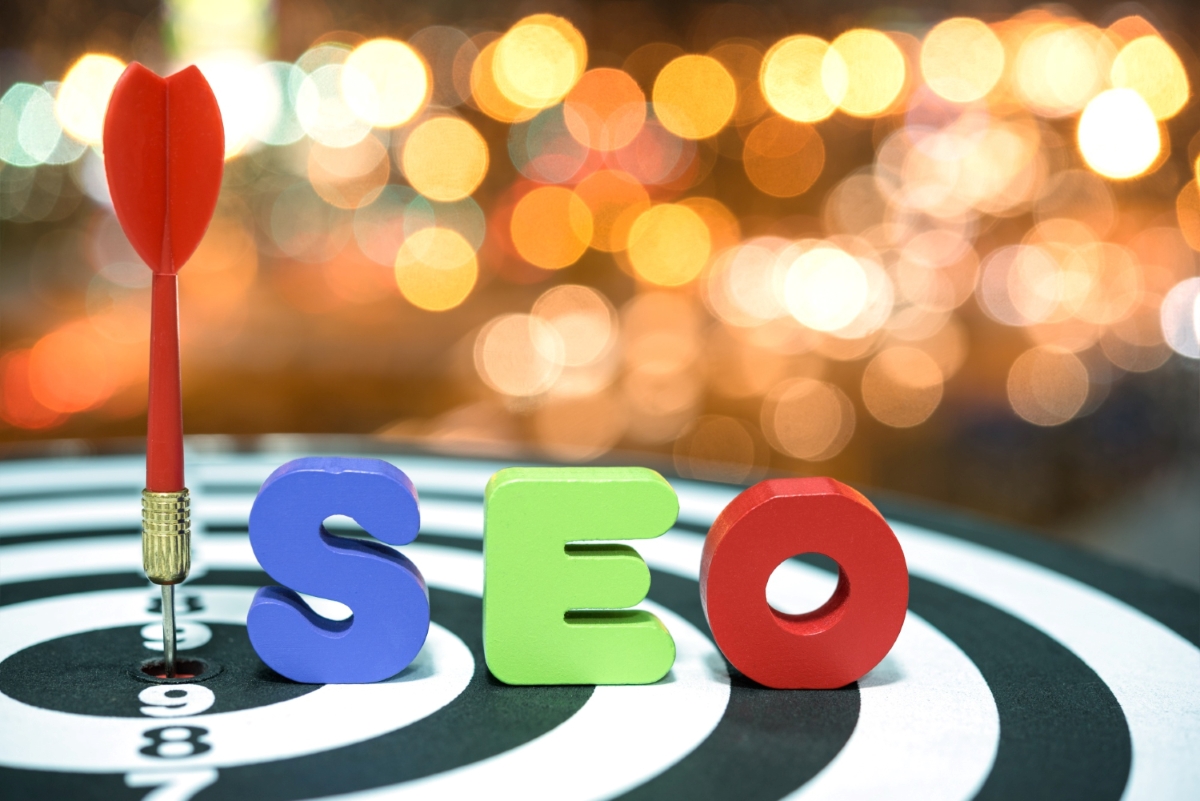Shopify SEO focuses on optimizing Shopify-based online stores to enhance their visibility on search engines like Google. For e-commerce businesses, ranking on the first page of search results can drive substantial organic traffic, improve click-through rates, and boost sales.
Table of Contents
ToggleUnlike general SEO, Shopify SEO targets platform-specific elements, including product pages, collections, and URL structures. With the rapid growth of online shopping, competition among Shopify stores is intense, making an effective SEO strategy crucial.
A well-optimized Shopify store ensures your products appear in searches for relevant keywords, helping potential customers find you easily. Moreover, it enhances the user experience by improving site speed, navigation, and mobile responsiveness.
In today’s competitive digital marketplace, Shopify SEO is essential, not optional. It serves as the foundation for sustainable organic growth, setting your e-commerce business up for long-term success.
Shopify SEO Checklist
Optimizing your Shopify store for search engines is vital for driving organic traffic and boosting conversions. This comprehensive checklist covers everything from keyword research to technical SEO, content marketing, and performance tracking. Use it to fully optimize your store and position it for long-term success.

Mastering Keyword Research for Shopify SEO
Keyword research is the foundation of a successful Shopify SEO strategy. It helps identify the terms potential customers use when searching online, enabling you to align your store’s content with their needs and improve visibility on search engines.
Tools for Keyword Research
Leverage powerful tools like Google Keyword Planner, Ahrefs, and SEMrush to discover relevant keywords for your niche. These tools provide valuable insights into:
- Search Volume: Gauge how often a keyword is searched.
- Competition: Assess how difficult it is to rank for a term.
- Keyword Difficulty: Target terms with the right balance of volume and competition to optimize results.
Techniques for Identifying Keywords
To enhance your Shopify store’s visibility, apply these techniques to pinpoint the most effective keywords:
1. Focus on Long-Tail Keywords
Long-tail keywords, such as “women’s running shoes for flat feet,” are specific and often less competitive than broader terms like “shoes.” They typically result in higher conversion rates by catering to more targeted searches.
2. Analyze Competitors
Use tools like Ahrefs or SEMrush to uncover the keywords your competitors rank for. This analysis can reveal untapped opportunities and guide your keyword selection process.
3. Incorporate Shopify-Specific Keywords
Target keywords tailored to Shopify users, such as “Shopify SEO apps” or “Shopify SEO tools,” to attract an audience seeking platform-specific solutions.
Understanding Search Intent
To achieve better rankings, align your keywords with the different types of search intent:
- Informational Intent: Phrases like “What is Shopify SEO?” cater to users seeking knowledge.
- Navigational Intent: Keywords like “Shopify SEO guide” help users find specific resources or pages.
- Transactional Intent: Terms such as “Shopify SEO services” target users ready to make a purchase or take action.
On-Page SEO Optimization for Shopify: Boost Your Store’s Rankings
On-page SEO is vital for optimizing your Shopify store to improve visibility, attract organic traffic, and drive conversions. This involves refining key page elements, including title tags, meta descriptions, product descriptions, and URL structures.
Crafting Effective Title Tags and Meta Descriptions
Title tags and meta descriptions are often the first impression your store makes on search engines and potential customers. Here’s how to craft them effectively:
- Use Target Keywords: Incorporate primary keywords naturally in title tags and meta descriptions. For instance, “Shopify SEO Optimization Tips – Boost Your Rankings” seamlessly integrates relevant keywords.
- Stay Concise: Limit title tags to 50–60 characters and meta descriptions to 150–160 characters to ensure full visibility on search engine results pages (SERPs).
- Incorporate Calls to Action (CTAs): Use phrases like “Shop Now” or “Explore More” in meta descriptions to encourage clicks.
Optimizing Product Descriptions and Images
Product descriptions and images are key to enhancing user experience and search visibility.
Keyword Placement
- Naturally integrate relevant keywords into product descriptions.
- Focus on unique selling points and product benefits to engage users and improve rankings.
Alt Text for Images
Add descriptive alt text to every image, incorporating keywords when appropriate. For example: “Alt text: Red leather backpack for women – Shopify SEO.”
Compress Images
Use tools like TinyPNG or Shopify’s built-in optimizer to reduce image file sizes while maintaining quality. Faster-loading pages improve user experience and boost SEO.

URL Structure Best Practices
An optimized URL structure enhances user experience and helps search engines better understand your content.
- Keep URLs Short and Descriptive: Use simple, keyword-rich URLs. For example, /mens-running-shoes is better than /product123.
- Avoid Special Characters: Use hyphens instead of underscores and minimize numbers or symbols.
- Adopt a Consistent Format: Stick to a logical structure like domain.com/category/product-name.
Bonus Tips
- Internal Linking: Link related pages and products to enhance navigation and distribute link equity throughout your site.
- Schema Markup: Implement structured data for product pages to enable rich snippets, such as reviews and pricing, in search results.
- Robots.txt and XML Sitemap: Ensure essential pages are crawlable and submit your XML sitemap to Google Search Console for quicker indexing.
Mastering Technical SEO for Shopify
Technical SEO is essential for ensuring your Shopify store performs well in search engines. It forms the backbone of effective SEO by addressing site speed, mobile responsiveness, and the proper configuration of XML sitemaps and robots.txt files. These elements collectively boost rankings and drive conversions.
Site Speed Optimization: Enhancing Performance for Better Rankings
A slow-loading Shopify store negatively impacts user experience and search engine rankings. Research shows that even a one-second delay can reduce conversions by 7%.
Actionable Steps for Speed Optimization
Follow these targeted strategies to enhance site speed and improve SEO:
- Image Optimization: Compress images with tools like TinyPNG or Shopify’s built-in optimizer. Convert them to WebP format for faster loading without sacrificing quality.
- App Management: Audit third-party apps, removing or disabling those you no longer use to prevent unnecessary slowdowns.
- Minify CSS, JavaScript, and HTML: Clean up unnecessary code using Shopify’s Theme Settings or external tools like GTmetrix.
- Enable Browser Caching: Use browser caching via Shopify or third-party plugins to improve load times for returning visitors.
- Content Delivery Network (CDN): Leverage Shopify’s built-in CDN for global content delivery, minimizing latency.

Testing Tools
Identify and resolve speed issues using tools like:
- Google PageSpeed Insights
- GTmetrix
- Shopify-specific SEO tools
Mobile Responsiveness: Adapting for Modern Shoppers
With over 50% of e-commerce traffic coming from mobile devices, a mobile-friendly store is non-negotiable. Mobile optimization reduces bounce rates and increases engagement, leading to better SEO performance.2
Steps to Optimize Mobile Responsiveness
- Responsive Themes: Choose Shopify themes optimized for mobile-first browsing. Preview the theme using Shopify’s mobile editor to ensure proper scaling.
- Touch-Friendly Navigation: Space clickable elements like buttons and links appropriately. Avoid complex menus that are hard to expand on small screens.
- Test Across Devices: Regularly test your store’s design using tools like Google’s Mobile-Friendly Test.
- Mobile-Specific Content: Optimize images and text for mobile users. Avoid overwhelming users with excessive scrolling or dense content.
XML Sitemaps and Robots.txt Configuration: Guiding Search Engines Effectively
XML sitemaps and robots.txt files are crucial for guiding search engines to index your Shopify store’s pages accurately and efficiently.
Optimizing XML Sitemaps
Ensure all essential content is easily discoverable:
- Clean Your Sitemap: Shopify auto-generates sitemaps but exclude pages like out-of-stock products, duplicate categories, or thank-you pages.
- Submit to Google Search Console: Regularly submit your sitemap to Google Search Console to ensure Google is indexing the right pages.
Configuring Robots.txt
Effectively managing your robots.txt file improves indexing and protects sensitive content:
- Block irrelevant pages, such as admin, checkout, or internal search results.
- Use Shopify’s customizable robots.txt files to fine-tune what search engines can crawl.
- Test configurations using Google Search Console’s robots.txt tester to avoid accidentally blocking critical pages.
Perfecting these technical SEO elements ensures your Shopify store is fast, mobile-optimized, and search-engine-friendly. Combine these strategies with Shopify marketing tips to achieve significant growth and better conversions.
Content Marketing Strategies for Shopify SEO
Content marketing is essential for increasing your Shopify store’s visibility and driving organic traffic. By creating engaging and valuable content, you can boost your store’s SEO while fostering meaningful connections with your audience.
Below are two key strategies for optimizing your content marketing for SEO success.
Blogging and Its Impact on SEO
Blogging is a powerful way to enhance your Shopify store’s SEO while engaging your target audience. Regularly publishing high-quality, relevant posts establishes your brand as an authority and provides search engines with valuable content.
Key Blogging Strategies for SEO
- Keyword-Rich Content: Incorporate keywords related to your niche, such as “Shopify SEO tips” or how to optimize your Shopify store for better conversions, to increase your chances of ranking for relevant searches.
- Evergreen Content: Focus on timeless posts like product guides, tutorials, and how-to articles that remain relevant over time.
- Long-Tail Keywords: Use more specific, less competitive phrases, such as “Shopify SEO tools for small businesses,” to target a niche audience effectively.
Use Shopify SEO Tools
Leverage resources like Shopify SEO tools and resources to identify high-value keywords and optimize your blog posts.
The Benefits of Blogging
Blogging not only improves SEO rankings but also drives traffic through:
- Social Media: Shareable content increases visibility across platforms.
- Backlinks: Informative, high-quality posts encourage other sites to link to your store, boosting search engine authority.

User-Generated Content and Reviews
User-generated content (UGC), such as reviews and customer photos, is a valuable asset for your Shopify store’s SEO. Fresh content from UGC meets Google’s preference for updated material while building trust with potential buyers.
Benefits of UGC
- Boosts Credibility: Positive reviews increase consumer trust and improve rankings.
- Enhances Engagement: UGC offers authentic insights into customer experiences, encouraging interaction.
- Supports Social Proof: Photos and testimonials make your store more appealing to prospective buyers.
Encouraging UGC
- Ask for Reviews: Prompt customers to leave reviews on product pages or share their experiences on social media.
- Incentivize Participation: Offer discounts or rewards for submitting reviews or sharing photos.
Examples of Effective UGC
For instance, a skincare store could benefit from before-and-after photos or reviews detailing product effectiveness. These contributions help potential buyers make informed decisions while enhancing your SEO efforts.
Effective Link-Building Strategies for Shopify SEO
Link building is a cornerstone of Shopify SEO, as high-quality backlinks significantly enhance your website’s authority and search engine rankings. Backlinks signal to search engines that your content is credible and valuable, leading to improved visibility and organic traffic.
Importance of Backlinks
Backlinks act as endorsements for your store’s content. When authoritative websites link to your store, search engines interpret it as a vote of confidence in your site’s credibility.
Key Benefits of Backlinks
- Improved Rankings: Backlinks from reputable sources help your store rank higher on search engines.
- Enhanced Domain Authority: Boosting your domain authority (DA) increases your store’s online reputation and trustworthiness.
- Increased Discoverability: Backlinks make it easier for search engines to crawl and rank your pages.
- Higher Conversion Rates: Quality backlinks attract potential customers, leading to better engagement and sales.
Prioritizing high-quality backlinks is essential for a robust Shopify SEO strategy.
Strategies for Acquiring Quality Links
Building quality backlinks takes effort but delivers significant results. Here are some proven methods to strengthen your Shopify store’s backlink profile:
Guest Blogging
- Publish articles on reputable blogs within your industry to establish authority and earn backlinks.
- Target high-domain authority (DA) sites related to e-commerce, Shopify SEO, or online retail.
Content Outreach
- Reach out to website owners, influencers, or bloggers in your niche for collaborations.
- Share high-value content, such as Shopify SEO guides, tutorials, or product reviews, to attract organic backlinks.
Product Reviews and Mentions
- Encourage influencers, bloggers, or industry experts to review your products in exchange for honest feedback.
- These reviews provide contextual backlinks and boost trust in your brand.
Broken Link Building
- Identify broken links on websites within your niche using tools like Ahrefs or SEMrush.
- Offer your content as a replacement, benefiting both parties by restoring functionality and earning a backlink.
Social Media and Community Engagement
- While social media links are “no-follow,” sharing your content on platforms like Reddit, Quora, or forums can attract organic backlinks.
- Engage with relevant communities to increase the visibility and shareability of your content.

Resource Pages and Directories
- Submit your Shopify store to industry-specific directories or resource pages.
- These listings improve your backlink profile and expose your store to targeted audiences.
Utilizing Shopify Apps for SEO
SEO apps can significantly enhance your Shopify store’s search engine rankings by automating optimization tasks and improving site performance. From managing metadata to streamlining backlinks and content structure, these tools reduce manual efforts and help set your store up for success.
Why Use Shopify SEO Apps?
The right Shopify apps can:
- Boost conversions by optimizing your store for search engines.
- Automate tedious SEO tasks, freeing up time for strategic planning.
- Ensure critical elements like metadata, image optimization, and site speed are well-managed.
What are the best Shopify apps for SEO?
1. Plug in SEO
- What It Does: Scans your store for SEO issues and provides actionable recommendations.
- Key Features:
- Optimizes product pages and meta descriptions.
- Identifies broken links.
- Ensures all SEO elements are correctly implemented.
- Benefits: A comprehensive tool for improving on-page SEO and addressing technical issues.
2. SEO Image Optimizer
- What It Does: Compresses and optimizes images to improve site speed and SEO.
- Key Features:
- Automatically compresses images without compromising quality.
- Enhances page load time, a crucial factor for user experience and SEO.
- Benefits: Ideal for maintaining a fast-loading store that appeals to both users and search engines.
3. Yoast SEO
- What It Does: Offers a full suite of SEO tools tailored for Shopify.
- Key Features:
- Optimizes title tags, meta descriptions, and breadcrumbs.
- Integrates seamlessly with Shopify’s platform.
- Benefits: A user-friendly app for implementing and managing SEO best practices.
4. Smart SEO
- What It Does: Automates meta tags and alt tags for images and creates dynamic XML sitemaps.
- Key Features:
- Improves on-page SEO and accessibility.
- Enhances search engine crawling and indexing.
- Benefits: Streamlines metadata management and ensures your store is search-engine-friendly.
Tracking Your Shopify SEO Performance with Google Analytics and Search Console
Monitoring your Shopify store’s SEO performance is essential for identifying strengths, addressing weaknesses, and refining your strategies. Tools like Google Analytics and Google Search Console provide actionable insights to help you optimize your store’s visibility and user experience.
Google Analytics Setup
Integrating Google Analytics with your Shopify store enables you to:
- Track User Behaviour: Understand how visitors interact with your content, including pages they visit and their navigation paths.
- Monitor Traffic Sources: Identify where your traffic is coming from (e.g., organic search, social media, or referrals).
- Set Goals and Measure Conversions: Establish objectives like completed purchases or form submissions to assess your store’s success.
Key Metrics to Monitor
- Bounce Rate: Indicates the percentage of visitors leaving after viewing only one page. A high bounce rate may signal user experience issues.
- Time on Page: Measures engagement, helping you identify content that resonates with your audience.
- Most Visited Pages: Highlights popular content and areas for further optimization.
Google Search Console Setup
Google Search Console offers insights into how Google crawls, indexes, and ranks your site. It helps you:
- Monitor Search Performance: Gain data on impressions, click-through rates (CTR), and keyword rankings.
- Identify Keywords: Discover which terms are driving traffic and refine your content strategy accordingly.
- Address Technical Issues: Detect errors like broken links or crawl issues that could affect rankings.
How to Use Search Analytics
The Search Analytics report provides valuable data on:
- Top Keywords: Terms that generate the most impressions and clicks.
- Average Position: Your store’s ranking for specific keywords in search results.
- CTR Trends: Evaluate whether your title tags and meta descriptions are driving engagement.
Tracking SEO Metrics
To improve your Shopify store’s SEO performance, focus on the following metrics:
- Organic Traffic Growth: Monitor the volume of visitors arriving through unpaid search results.
- Keyword Rankings: Track your position for target keywords to measure SEO effectiveness.
- Conversion Rates: Assess how well your SEO efforts translate into sales or desired actions.
Using Google Analytics and Search Console together allows you to pinpoint issues, optimize user experience, and make data-driven decisions to enhance your store’s SEO strategy.
If you’re ready to elevate your Shopify SEO performance, Marketing Planet experts can guide you with tailored strategies for measurable results. Start optimizing your store today!

What are common SEO mistakes to avoid on Shopify?
When optimizing your Shopify store for SEO, avoiding common pitfalls is crucial to maintain strong search engine rankings and ensure your store’s visibility. Below are key SEO mistakes to watch out for:
Ignoring Mobile Optimization
With more customers shopping on mobile devices, neglecting mobile responsiveness can severely harm your SEO rankings.
- Why It Matters: Google prioritizes mobile-first indexing, meaning mobile-friendly stores are ranked higher in search results.
- How to Fix It: Use responsive themes and test your store’s performance on mobile devices using tools like Google’s Mobile-Friendly Test.
Poor Product Descriptions
Generic or poorly written product descriptions can make your pages appear low-quality and fail to rank well.
- Why It Matters: Unique, keyword-optimized descriptions improve search visibility and engage users.
- How to Fix It: Write detailed, keyword-rich descriptions that accurately represent each product and highlight unique features.
Missing Title Tags and Meta Descriptions
Failing to customize title tags and meta descriptions can result in lower click-through rates (CTR) and poor rankings.
- Why It Matters: These elements are your store’s first impression on search engines and users.
- How to Fix It: Ensure all pages have concise, keyword-optimized title tags (50-60 characters) and meta descriptions (150-160 characters).
Neglecting URL Structure
Creating long, complex URLs can confuse both users and search engines.
- Why It Matters: Clean, keyword-rich URLs improve crawlability and user experience.
- How to Fix It: Keep URLs short, descriptive, and include relevant keywords, such as the product name and category.
Not Using Schema Markup
Schema markup provides structured data that helps search engines better understand your content.
- Why It Matters: Without schema markup, you miss out on rich snippets like star ratings and pricing, which can improve CTR.
- How to Fix It: Implement structured data for key pages using apps or Shopify’s schema tools.
Failing to Optimize Images
Large, uncompressed images slow down your site and negatively affect user experience and rankings.
- Why It Matters: Slow-loading pages increase bounce rates and hurt SEO.
- How to Fix It: Compress images using tools like TinyPNG and include descriptive alt text with relevant keywords.
Overlooking Backlinks
Focusing only on internal SEO without building external backlinks limits your store’s authority and growth.
- Why It Matters: Backlinks from reputable sites signal credibility to search engines.
- How to Fix It: Develop a strategy to acquire high-quality backlinks from authoritative websites through guest blogging, partnerships, or outreach.
Struggling with SEO Implementation?
Avoiding these common mistakes can improve your Shopify store’s rankings, traffic, and conversions. If you need expert assistance, let Marketing Planet craft actionable SEO strategies tailored to your store. Contact us today for a free consultation!

Conclusion: Master Shopify SEO for Greater Success
Optimizing your Shopify store for search engines is essential to improving visibility, attracting organic traffic, and boosting sales. By implementing the best practices outlined in this guide—ranging from keyword research and on-page SEO to utilizing Shopify apps and effective link-building strategies—you can enhance your store’s performance and achieve sustainable growth.
Ready to elevate your Shopify store? Marketing Planet’s expert SEO team can craft a personalized strategy that delivers measurable results. Contact us today to schedule a free consultation and start your journey toward better Shopify SEO!















